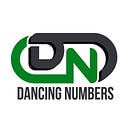Unlocking the Power of QuickBooks Tableau Integration
In today’s data-driven business landscape, the ability to access, analyze, and visualize financial data efficiently is a game-changer. QuickBooks, a leading accounting software, and Tableau, a powerful data visualization tool, can be seamlessly integrated to provide businesses with a robust solution for financial reporting and analysis. In this article, we’ll explore the benefits, steps, and best practices of integrating QuickBooks with Tableau.
Understanding QuickBooks and Tableau
QuickBooks is renowned for its role as a financial hub for businesses of all sizes. It simplifies accounting, tracks expenses, manages invoices and provides valuable insights into a company’s financial health. While QuickBooks offers a range of reporting features, its capabilities for in-depth data analysis and visualization are limited.
Tableau: The Data Visualization Expert
Tableau, on the other hand, is a data visualization and business intelligence tool that excels in transforming data into interactive and visually appealing dashboards. It enables users to explore data, discover insights, and present findings in a compelling manner. However, Tableau relies on data sources to create these visuals.
Why Integrate QuickBooks with Tableau?
1. Comprehensive Financial Insights
The integration of QuickBooks and Tableau provides businesses with a 360-degree view of their financial data. QuickBooks stores financial records, while Tableau offers dynamic visualization. Together, they offer comprehensive insights, enabling better decision-making.
2. Customized Reporting
Tableau allows for highly customizable dashboards and reports. By integrating QuickBooks data into Tableau, you can design reports tailored to your specific business needs, ensuring you focus on the metrics that matter most.
3. Real-time Updates
QuickBooks data is automatically updated in Tableau, ensuring that you always have access to the latest financial information. This real-time aspect is crucial for businesses that require up-to-the-minute insights.
4. User-Friendly Interface
Tableau’s intuitive interface makes it easy for non-technical users to create and interpret data visualizations. This accessibility democratizes data analysis within your organization.
How to Integrate QuickBooks with Tableau
1. Prepare Your QuickBooks Data
Before integrating, ensure that your QuickBooks data is well-organized and clean. This step is vital to avoid discrepancies and errors when importing data into Tableau.
2. Select the Integration Method
Tableau offers multiple methods for integrating data from external sources. The most common methods include using Web Data Connectors (WDC) or connecting to QuickBooks through an API (Application Programming Interface).
3. Authenticate and Connect
Depending on the integration method chosen, you’ll need to authenticate your QuickBooks account within Tableau. This process establishes a secure connection between the two platforms.
4. Map Data Fields
Map the data fields in QuickBooks to their corresponding fields in Tableau. This mapping ensures that the data is imported accurately.
5. Schedule Data Refresh
Set up a schedule for data refresh. This ensures that your Tableau dashboards always reflect the latest information from QuickBooks.
Also, learn about Jira QuickBooks Integration
Best Practices for QuickBooks Tableau Integration
1. Data Security
Maintain strict data security protocols when integrating QuickBooks with Tableau. Ensure that sensitive financial information is protected throughout the process.
2. Regular Backups
Frequent data backups are essential to safeguard against data loss during integration. Implement a backup strategy to prevent potential disruptions.
3. User Training
Provide training to users who will be working with Tableau dashboards. Familiarity with Tableau’s features and functions is crucial for effective data analysis.
4. Performance Optimization
Monitor the performance of your Tableau dashboards regularly. Optimize queries and reports to ensure smooth and efficient data visualization.
In Conclusion
Integrating QuickBooks with Tableau is a strategic move for businesses seeking to leverage their financial data for better decision-making. By combining QuickBooks’ financial expertise with Tableau’s data visualization prowess, you unlock a world of possibilities in understanding and presenting your financial information.
With the right integration strategy and best practices in place, you can harness the power of these two tools to drive growth, streamline operations, and gain a competitive edge in your industry. So, take the step towards QuickBooks Tableau integration, and witness the transformation of your financial reporting and analysis capabilities.
Don’t hesitate to explore this powerful integration and propel your business into the world of data-driven success!
